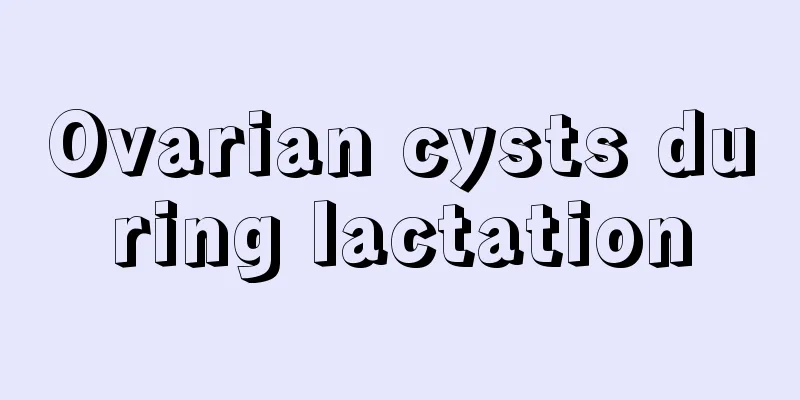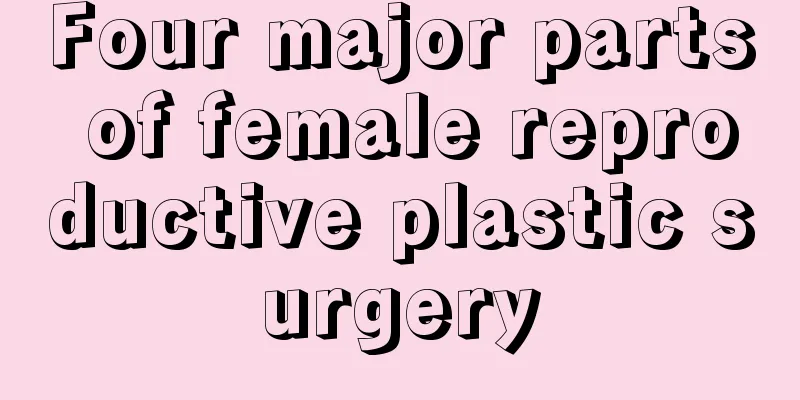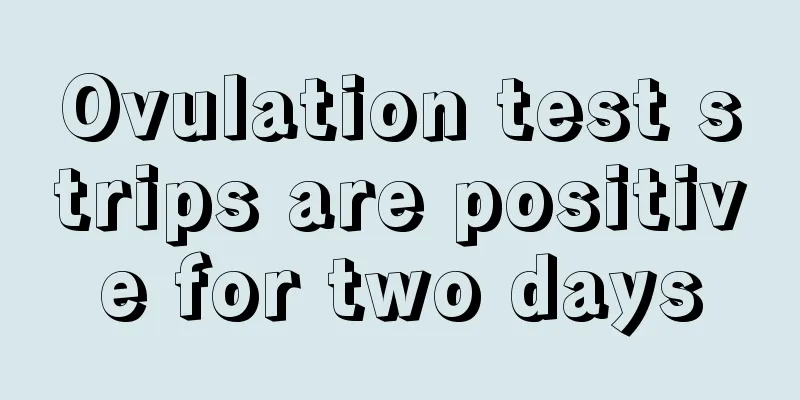Ovarian cysts during lactation

|
Ovarian cysts are a very common disease. Generally speaking, people of any age can develop ovarian cysts. Women who are breastfeeding can also suffer from ovarian cysts. Ovarian cysts are very harmful to women's health and need to be treated in time. But everyone knows that breastfeeding is a special period. Women who are breastfeeding usually cannot take medicine because they need to feed their babies. What to do with ovarian cysts during lactation? Ovarian cysts during lactation can generally be controlled and treated with medications. However, the best treatment for multiple ovarian cysts is currently hysteroscopy. Combined hysteroscopy and laparoscopy is a technical name for combined treatment of hysteroscopy and laparoscopy. It was introduced from Germany at a huge cost. Through hysteroscopy and laparoscopy technology, doctors can clearly and intuitively detect male and gynecological diseases and causes of infertility and perform surgery. Examination and treatment are carried out at the same time, reducing trauma to a minimum, making it safe and painless. However, ovarian cysts during lactation are very different. For the sake of conservativeness, patients can use traditional Chinese medicine to treat ovarian cysts. At present, traditional Chinese medicine has made certain breakthroughs in the treatment of ovarian cysts, and most of the common fluid-filled cysts can be treated. However, the efficacy of traditional Chinese medicine in treating ovarian cysts mostly stays at the level of relieving symptoms, and it is difficult to carry out radical treatment. Many patients experience recurrence of the disease during treatment, and a small number of patients experience recurrence after treatment, which has a great impact on their lives. Ultrasound interventional therapy is an advanced medical method for treating various cysts and myomas. The detailed operation is to directly puncture the diseased tissue under ultrasound guidance, and then inject drugs to make the diseased tissue quickly dehydrated, deformed and necrotic. It has six characteristics: accurate display of lesions, simple and rapid operation, obvious treatment effect, less tissue damage and pain for patients, low cost, and no radioactive damage. Symptoms of ovarian cysts during lactation: 1. Functional cyst: This is the most common cyst. It occurs in women of childbearing age during the ovulation cycle, when an abnormal amount of fluid accumulates in the follicles or corpus luteum, forming follicular cysts or corpus luteum cysts. This functional cyst can sometimes be quite large, but it usually disappears on its own within three months, regardless of medication or not. 2. Hemorrhagic cysts: Sometimes follicular cysts and corpus luteum cysts grow too rapidly, causing the ovarian tissue to be pulled and rupture and bleed. This blood accumulates in the ovary because it has no outlet, and is called a hemorrhagic cyst. This type of cyst usually disappears on its own but it may take a long time. If the physical discomfort is more obvious, you can take medicine to alleviate the symptoms. Only in rare cases, when the patient presents with more severe symptoms, does surgical resection require surgery. 3. Serous epithelial cysts and mucinous epithelial cysts: Cysts that still exist after three months of observation are likely to be epithelial ovarian cysts rather than functional cysts. This is because the serous cells and mucous cells with secretory functions are buried in the ovaries after ovulation and continuously secrete fluid to form cysts. This type of cyst will not go away and needs to be removed surgically. 4. Chocolate cyst (endometrioma): It refers to endometriosis growing in the ovaries, forming a large amount of sticky coffee-colored chocolate-like liquid in the ovaries. Because endometriomas grow larger over time, they gradually erode normal tissue and cause irreversible damage to ovarian tissue. After assessing its severity, surgery may be necessary. 5. Teratoma: This is a very special cyst. It may be caused by problems in cell differentiation during the embryonic period, and it may take a long time to manifest itself. It produces accumulation of hair, teeth and some oils in the ovaries. Since the teratoma will not disappear on its own and may continue to grow, and there is a 15% chance of causing ovarian torsion, it is best to remove it early. Generally speaking, the malignancy rate is less than one in a thousand. |
<<: What causes brown blood in the vagina?
>>: How long does it take to remove the ring without bleeding?
Recommend
Is it easy to get pregnant during the daytime during ovulation?
Every woman's ability to get pregnant is diff...
Why does ovulation bleeding last for several days?
During the ovulation period, women will experienc...
What is the best way to remove pubic hair? Just three steps to make you look fresh
Pubic hair growth makes women feel very embarrass...
What can I eat to relieve my stomach pain during my period?
When we have our period, if we have stomach pain,...
Four lifestyle habits that women should avoid to avoid adnexitis
Adnexitis is a common gynecological disease among...
Why do I feel bloated after having sex?
After sexual intercourse, the abdomen becomes blo...
What is a simple and effective way to delay menstruation?
Women's menstrual period is very regular. If ...
Is it normal to delay the second menstrual period after miscarriage?
Abortion in women is a very important matter for ...
There are several reasons why women cannot have children.
Soon after marriage, the abdomen has not responde...
What is the cause of increased vaginal discharge and lower abdominal pain during ovulation?
Most women who have irregular menstruation will e...
What symptoms will women experience during ovulation?
Most women are very concerned about their menstru...
App Annie & Liftoff: 2020 Mobile Finance App Report
App Annie and Liftoff jointly released the "...
Normal values for nt test at 13 weeks
The NT test is actually one of the diagnostic bas...
What does hpy mean?
HPY usually refers to human papillomavirus infect...









